Tlaxcala, México.
Travel & Tour
Pictures, Photos, Images, & Reviews.
George & Eve DeLange
Google Map To Cacaxtla Archaeological Ruins In Tlaxcala, Mexico.
View Larger Map
We Are Proud Of Our SafeSurf Rating!
Click On Any Of The Following Links By Amazon.Com
For Books Or Videos About Touring In Mexico. No Obligation!
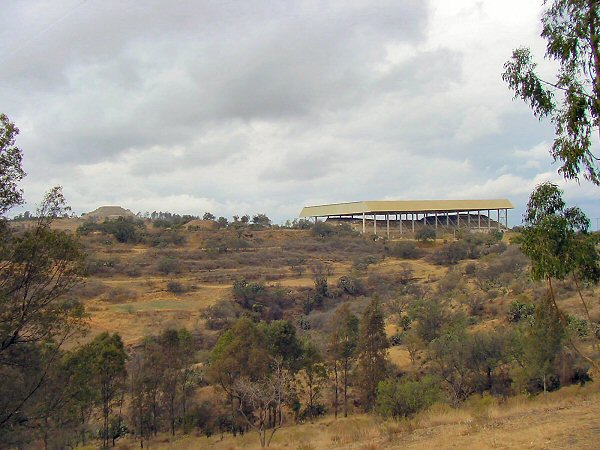
Cacaxtla Archaeological Ruins With Xochitécatl In Background
 |
| Cacaxtla Archaeological Ruins With Xochitécatl In Background |
|---|
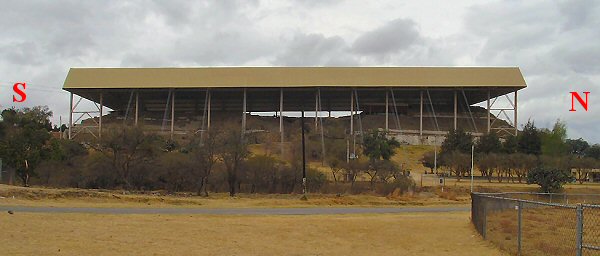 |
| Cacaxtla Building B, The "Great Platform." Looks Like It's Under An Aircraft Hanger. |
|---|
Cacaxtla, (pronounced "kah-kahsh-tlah"), whose name means "place of the merchant's pack," is located on a hilltop site in the Mexican state of Tlaxcala. Due to the way the toll road exits are constructed you can only get to Cacaxtla by two ways at the time we were there. Otherwise you can get lost for several hours running into dead end trails and roads. It can be frustrating because you can often see the road you need to get on but there is no access to the road. We think that the government will change the way these exits are constructed in the future so we would advise you to ask directions before attempting to drive to Cacaxtla. We were there on January 16, 2004 at about noon. One way to get there is that you must take the toll highway going from Mexico City to Puebla, taking the detour in the city of San Martín Texmelucan, and by then going through the towns of Villa Alta, San Mateo Ayecac, Tepetitla, San José Atoyatenco and San Miguel Xochitecatitla, then turning left towards San Miguel del Milagro. Or the second way is from the city of Tlaxcala, you take the federal road to Santa María Nativitas, going through the towns of Concordia, Victoria and Capula, then turning right towards San Miguel del Milagro. Cacaxtla was the principal seat of the “Olmeca”, also known as the Olmeca Xicalanca. An archaeological study of the region confirmed that Cacaxtla was the most powerful capital in the Tlaxcalan region during the first half of the Texcalac cultural phase from A.D. 650-1100. At this same time Teotihuacán’s power had been eroded allowing small successor states like Cacaxtla to take over the trade route that linked the Basin of México to the Gulf Coast and to the Mayan realms of the Usumacinta Basin. Cacaxtla covers about 180,000 square feet of which only Building B has been fully excavated. This residential area is made up of a labyrinth of rooms, patios, and passageways built around two main plazas oriented on a north-south axis. The architecture copied much of Teotihuacán’s talud-tablero style, together with a ground plan similar to Mayan palaces such as in Palenque. Frescoes are found throughout the palace site. The best preserved are found in the rooms adjoining the North Plaza, which is a six hundred square meter courtyard which was the focus of Cacaxtla’s ritual life. At first the Early Classic Mayan lords copied Teotihuacán’s architectural and artistic style as a means of showing a special relationship with Mesoamerica’s most powerful state. After Teotihuacán’s influence had eroded, the reverse occurred. The Cacaxtla paintings show that these Central Mexico warlords later on incorporated the Late Classic Maya style. When you walk past the museum and resturant area you will see Building B with its three levels and sloping talus which faces west. It has been discovered that Building B has had nine different levels of construction. A few pillars and walls remain in its upper level. The upper level of the Great Platform is a courtyard with three porticoes located on its south, east and west sides, to the north we find the "Battle Mural". The West portico has a structure whose staircase can still be seen. When this portico was covered, a pillar was preserved. It has on its central part a relief figure of unbaked clay covered with stucco, but only part of its skirt and sandals have survived. From his sandals a maize plant, and probably a cacao plant arise. The remaining pillars of this portico are framed by a series of circles or chalchihuites made with clay and covered with stucco. We have included photos of these structures. To the south we can see the area known as El Palacio. The Palace is made up by a series of rectangular chambers of different sizes. In the center of one of them there is a courtyard with a bench for the collection of rain water through the drainage placed in the southwest corner. The walls of the porticoes in this courtyard were decorated with diamond-shaped stucco images. The Building B "Battle Murals" depict two groups of warriors engaged in a ritual combat. They show the winners wearing jaguar skin capes and their unarmed victims dressed as quetzal birds and parrots. The piers of the Star Chamber show a pair of blue anthropomorphic creatures. The male wears the arms and tail of a Scorpion signifying the constellation Scorpious. According to Aztec legends such beings were called Tzitzimime, who are spirits of defeated gods that were cast out of the sky after they destroyed a sacred grove of fruit trees. Looking down from Group Two, you can see the "Temple of Venus", a small chamber with painted pillars. The museum, and restrooms are clean.
|
Click On Any Of The Following Links By Amazon.Com
For Books Or Videos About Touring In Mexico. No Obligation!
The Mexico City International Airport (Spanish: Aeropuerto Internacional de la Ciudad de México or AICM), also called Benito Juárez International Airport (IATA: MEX, ICAO: MMMX) is the major commercial airport that serves Mexico City, the capital of Mexico. It is also Mexico's and Latin America's busiest airport!
The Hermanos Serdán International Airport (IATA: PBC, ICAO: MMPB) is the international airport located near Puebla, Puebla, Mexico. It handles national air traffic for the city of Puebla.
It also serves as an alternate airport for Mexico City, being part of the metropolitan airport group for the Mexican capital, comprising the airports of Mexico City, Toluca, Cuernavaca and Querétaro.
To visit this area we would suggest flying into either Mexico City or Puebla and then staying at a hotel of your choice.
There are many very good hotels and motels in the area, and if you need a place to stay; Priceline.com can arrange that for you. In fact, we think they are the best way to do it!
We have personally, booked flights, hotels, and vacations, through Priceline.com and we can highly recommend them. Their website is very easy to use!
We have some links to Priceline.com on this page, since they can arrange all of your air flights, hotels and car.
We of course, appreciate your use of the advertising on our pages, since it helps us to keep our pages active.
We also have links on this page, that will connect you with several of the best hotels in Mexico City. Hotels that we have personally used!
We could, also suggest getting a hotel, and then letting them arrange for either a car, or a tour of Mexico City. If you call their Concierge Services, ahead of your arrival, all of this can be pre-arranged for you.
We have used this method, many times, when traveling in Mexico. We have found it to be safe and it works!!! We have never experienced a problem, doing it this way!
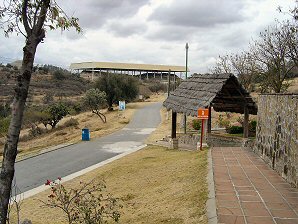

Trail To Structure B
Seen From Resturant Audrey DeLange At
Small Pyramid In
Front Of Structure B
Unexcavated, Left Of The Trail 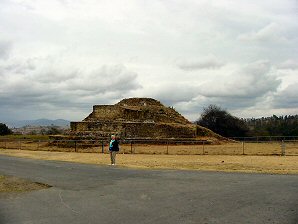
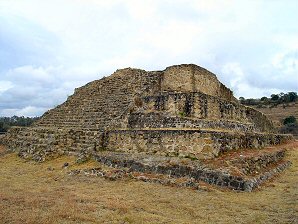
Audrey DeLange At
Small Pyramid In
Front Of Structure B
To The Right Of The Trail Probably Aligned To
Winter Solstice 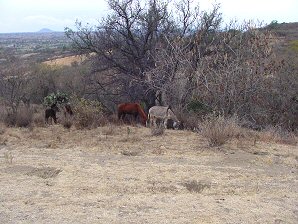
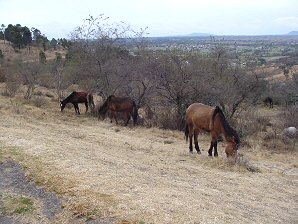
Donkeys And
Horses On Site Horses On Site 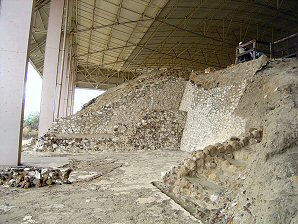
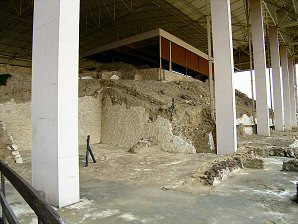
East Side Structure B
Looking South East Side Structure B
Looking North 

On Structure B,
Looking South
The "El Palacio"
Portico In Background. On Structure B,
Looking North
The Battle Panel
Under Glass Protection
Can Be Seen In Background 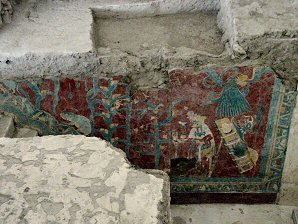
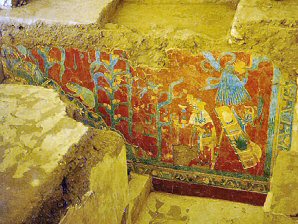
Stair Mural At
The Red Temple
Shows Merchant named
"Four Deer." Enhanced Photo
To Bring Out Detail. 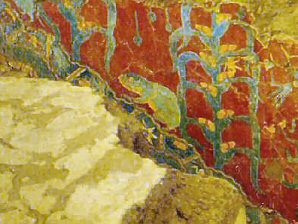
Toad Climbing
Up Serpent. Merchant and His
Merchant Pack
Site Is Named For
Pack In Photo. 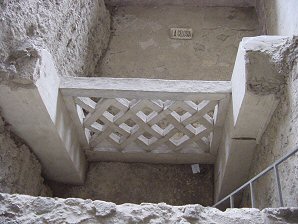
"Temple Of Venus."
Lattice Work. Large Pot With Lid
Called A Cuexcomate
Used To Store Grains. 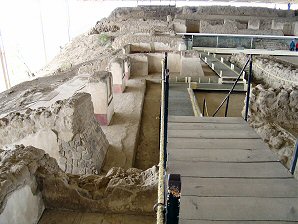
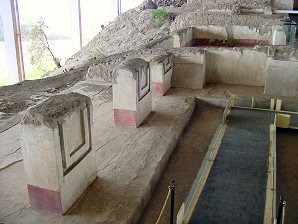
The Red Temple
Actually A Corridor
On West Side. Red Temple
Called "Red Temple."
Because Of The
Use Of Red Colors. 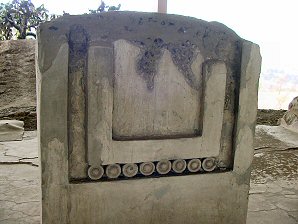
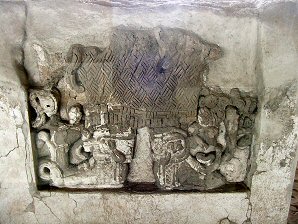
Red Temple Pillar. Red Temple Pillar. 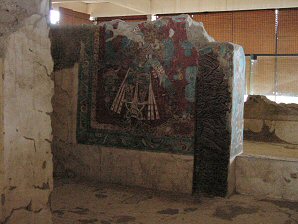
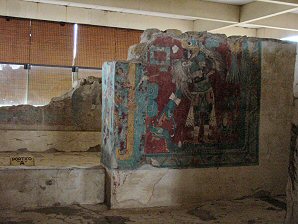
Jaguar Knight Mural. Jaguar Knight Mural. 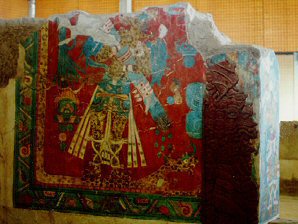
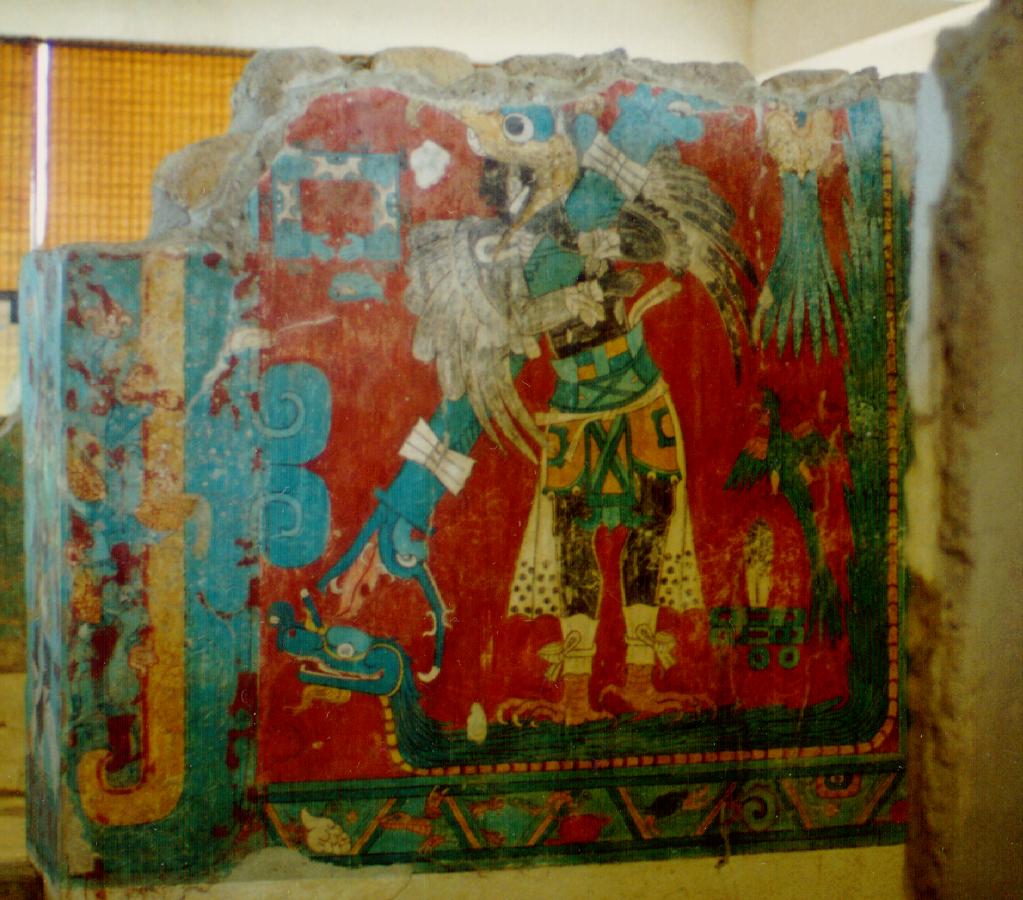
Enhanced Photo
Jaguar Knight Mural. Enhanced Photo
Jaguar Knight Mural. 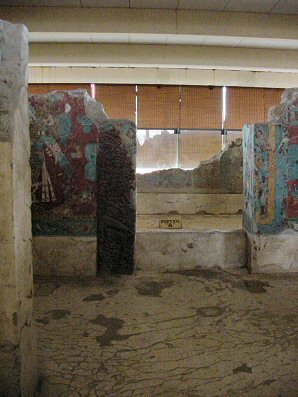
Cacaxtla. Cacaxtla. 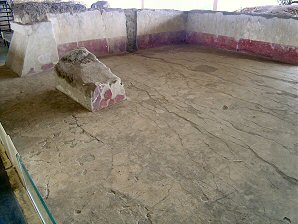
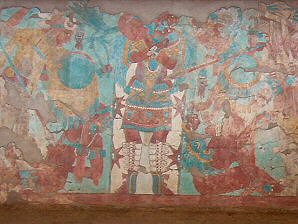
Remains Of A
Limestone Floor. Scenes From
The "Battle Mural."
Located On
North Portico 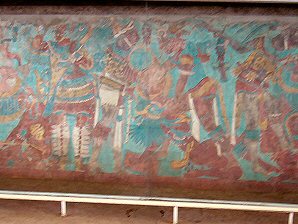
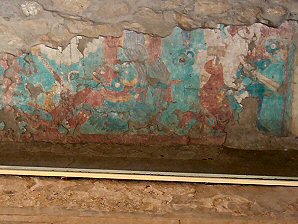
Showing A Sacrifice
Of Conquered
Eagle Warriers
(mostly naked) By
Jaguar Warriers (clothed). Really A Sacrifice,
Not A Battle! 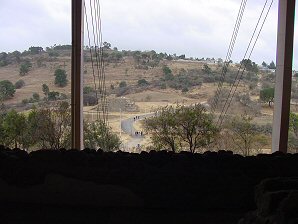
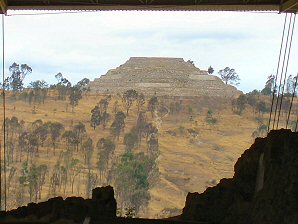
Looking East
Toward Site Entrance. Xochitécatl "Pyramid
Of The Flowers."
As Seen From
Structure B Of Cacaxtla
Looking To The West.
We Are Proud Of Our SafeSurf Rating!
Here Are Some Links To The Very Best & Most Popular Items Sold On Amazon.Com
To Learn More! Click The Links Below. No Obligation, Of Course!
Major Ruins Near Puebla!
The Mexico City International Airport (Spanish: Aeropuerto Internacional de la Ciudad de México or AICM), also called Benito Juárez International Airport (IATA: MEX, ICAO: MMMX) is the major commercial airport that serves Mexico City, the capital of Mexico. It is also Mexico's and Latin America's busiest airport! The Hermanos Serdán International Airport (IATA: PBC, ICAO: MMPB) is the international airport located near Puebla, Puebla, Mexico. It handles national air traffic for the city of Puebla. It also serves as an alternate airport for Mexico City, being part of the metropolitan airport group for the Mexican capital, comprising the airports of Mexico City, Toluca, Cuernavaca and Querétaro.
To visit this area we would suggest flying into either Mexico City or Puebla and then staying at a hotel of your choice. There are many very good hotels and motels in the area, and if you need a place to stay; Priceline.com can arrange that for you. In fact, we think they are the best way to do it! We have personally, booked flights, hotels, and vacations, through Priceline.com and we can highly recommend them. Their website is very easy to use! We have some links to Priceline.com on this page, since they can arrange all of your air flights, hotels and car. We of course, appreciate your use of the advertising on our pages, since it helps us to keep our pages active. We also have links on this page, that will connect you with several of the best hotels in Mexico City. Hotels that we have personally used! We could, also suggest getting a hotel, and then letting them arrange for either a car, or a tour of Mexico City. If you call their Concierge Services, ahead of your arrival, all of this can be pre-arranged for you. We have used this method, many times, when traveling in Mexico. We have found it to be safe and it works!!! We have never experienced a problem, doing it this way!
|
 |  |
| Trail To Structure B Seen From Resturant | Audrey DeLange At Small Pyramid In Front Of Structure B Unexcavated, Left Of The Trail |
|---|---|
 |  |
| Audrey DeLange At Small Pyramid In Front Of Structure B To The Right Of The Trail | Probably Aligned To Winter Solstice |
 |  |
| Donkeys And Horses On Site | Horses On Site |
 |  |
| East Side Structure B Looking South | East Side Structure B Looking North |
 |  |
| On Structure B, Looking South The "El Palacio" Portico In Background. | On Structure B, Looking North The Battle Panel Under Glass Protection Can Be Seen In Background |
 |  |
| Stair Mural At The Red Temple Shows Merchant named "Four Deer." | Enhanced Photo To Bring Out Detail. |
 | |
| Toad Climbing Up Serpent. | Merchant and His Merchant Pack Site Is Named For Pack In Photo. |
 | |
| "Temple Of Venus." Lattice Work. | Large Pot With Lid Called A Cuexcomate Used To Store Grains. |
 |  |
| The Red Temple Actually A Corridor On West Side. | Red Temple Called "Red Temple." Because Of The Use Of Red Colors. |
 |  |
| Red Temple Pillar. | Red Temple Pillar. |
 |  |
| Jaguar Knight Mural. | Jaguar Knight Mural. |
 |  |
| Enhanced Photo Jaguar Knight Mural. | Enhanced Photo Jaguar Knight Mural. |
 | |
| Cacaxtla. | Cacaxtla. |
 |  |
| Remains Of A Limestone Floor. | Scenes From The "Battle Mural." Located On North Portico |
 |  |
| Showing A Sacrifice Of Conquered Eagle Warriers (mostly naked) By Jaguar Warriers (clothed). | Really A Sacrifice, Not A Battle! |
 |  |
| Looking East Toward Site Entrance. | Xochitécatl "Pyramid Of The Flowers." As Seen From Structure B Of Cacaxtla Looking To The West. |
We Are Proud Of Our SafeSurf Rating!
Here Are Some Links To The Very Best & Most Popular Items Sold On Amazon.Com
To Learn More! Click The Links Below. No Obligation, Of Course!
Major Ruins Near Puebla!



